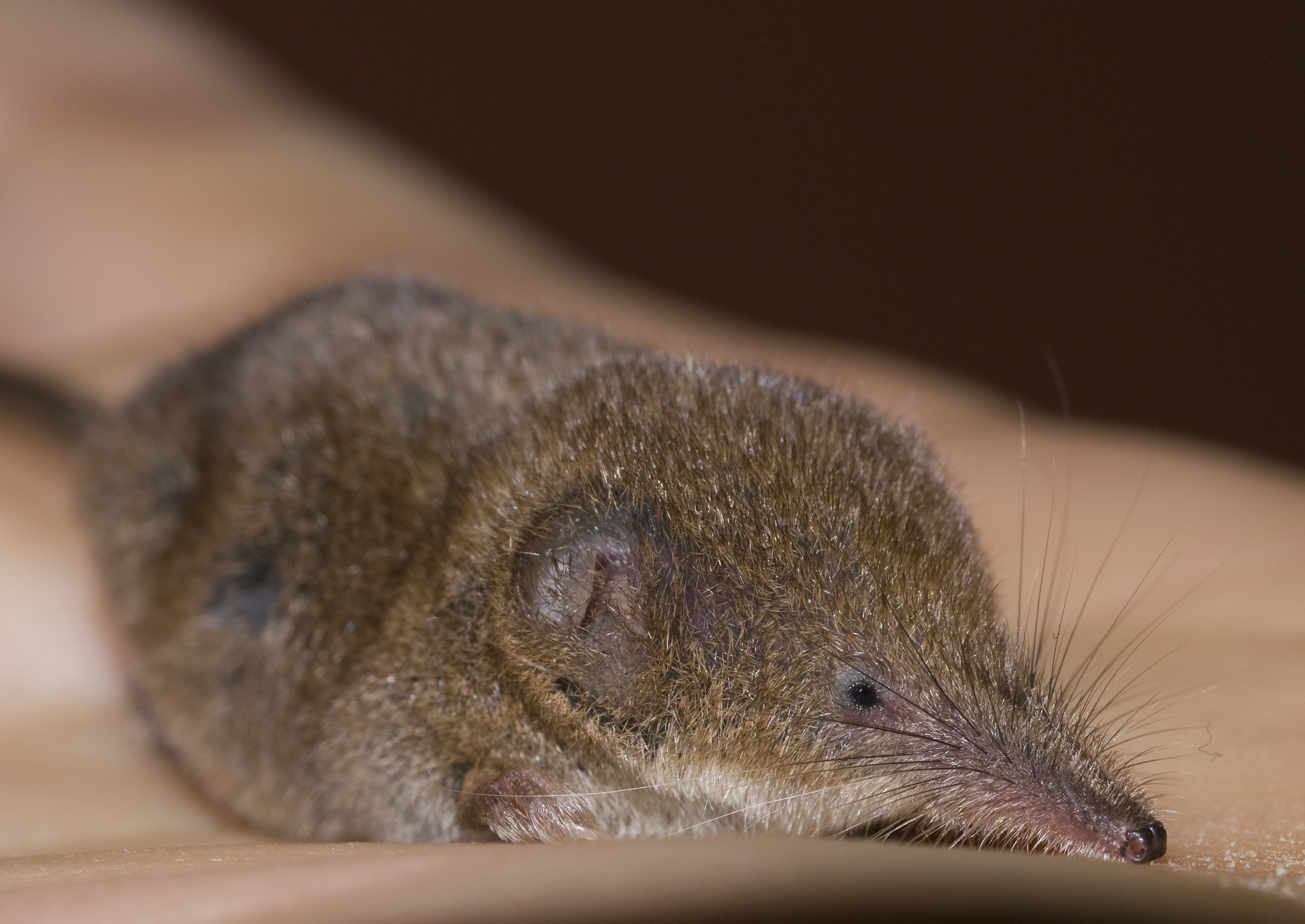
It’s a few days after American Thanksgiving. If you celebrated, it’s time to finish digesting all the food you ate and prepare to heat up some leftovers.
But even if you think you ate a lot of food yesterday, some animals can eat even more. For example, blue whales eat between 10 and 20 tons of food daily! That’s around 20 to 50 million calories, or 70- to 80-thousand Big Macs.
It makes sense that blue whales would eat a lot; after all, they’re the largest animals in the world. But when you compare this amount of food to their body weight, a blue whale’s feeding regimen is much less impressive. On average, a blue whale only eats about 12% of its body weight per day.
A much more impressive eater is one of the world’s smallest mammals: the American pygmy shrew.
What are shrews?
Before we talk about the American pygmy shrew, let’s take a brief detour and discuss shrews as a whole.
There are over 350 species of shrews living across the world in a variety of environments. In general, a shrew’s body type is similar across species: small, cylindrical bodies with short limbs and small eyes. However, species have slight differences due to different adaptations for different lifestyles. Some tropical species of shrews live in trees and so have much longer tails and toes than other shrew species. Water shrews are amphibious and have tiny eyes. Other shrews are well-adapted for burrowing and have small eyes and ears covered by fur for protection from dirt while burrowing.

At first glance, shrews may look like mice. But if you take a closer look, you’ll see that shrews don’t share much in common with mice at all: no outward ear flaps, beady eyes, and a much shorter tail. Shrews also have a very distinct, musky smell that I have never smelt in mice. In fact, shrews aren’t even rodents! Instead, shrews belong to the insectivore branch of the evolutionary tree. Shrews have been around for 45 million years and haven’t changed much in the past 10 million.
As shrews are insectivores, they primarily eat insects and other invertebrates. Fungi, seeds, and small vertebrates are also on the menu when they can be found. Some shrews even take on larger prey with the help of venomous saliva. Belonging to a very small group of venomous mammals, Northern short-tailed shrews use their saliva to kill or paralyze their prey. And these little animals won’t run short on venom anytime soon: one study suggests that each short-tailed shrew has enough poison in its body to kill 200 mice.
Just a little guy

But enough about shrews in general – onto the star of today’s post, the American pygmy shrew!
American pygmy shrews (Sorex hoyi) live in the northern parts of North America. Their range spreads across Canada down to the Rocky Mountains in Colorado and the Appalachian Mountains in the northeastern United States. American pygmy shrews can live in a variety of habitats within this range, including coniferous and deciduous forests, swamps, grassy clearings, and bogs. The key characteristic of all of these potential habitats is that they have dirt and leaf litter for the shrews to scuttle through.
While they don’t have the distinction of being venomous like their short-tailed shrew cousins, American pygmy shrews are unique because they are one of the world’s smallest mammals. An American pygmy shrew weighs less than a dime (0.07 ounces or 2 grams) and is 1.5 – 2 inches long (38 – 51 mm).
This tiny size means that American pygmy shrews can reach places inaccessible to most animals: the inside of bee hives. Squeezing through holes as small as 1 centimeter across, a pygmy shrew can enter a bee hive during early spring and catch a honey bee. Unlike mice, the shrews are uninterested in the pollen stored in a bee hive and care only about the insects. As it gets warmer and the bees become more active, American pygmy shrews will leave the hive alone and go after easier targets.
Eat a lot
For such a small animal, American pygmy shrews have a very high metabolism. Their little hearts beat 800 times a minute!
To fuel this quick metabolism, they have to eat a lot. American pygmy shrews eat three times their weight in food daily. This means it has to capture and eat prey every 15 – 30 minutes! A nearly constant need for food leaves little time for anything else, even sleep. American pygmy shrews spend their days and nights alternating between hunting and sleeping, usually taking short naps of just a few minutes at a time.
And what happens if they don’t catch enough food? It’s pretty simple: they die. Like other shrews, American pygmy shrews will die if they go more than an hour without eating.
Life’s a fast-paced, frantic search for food for American pygmy shrews. But at least they get to eat a lot of food while they’re at it!
Resources

Leave a Reply